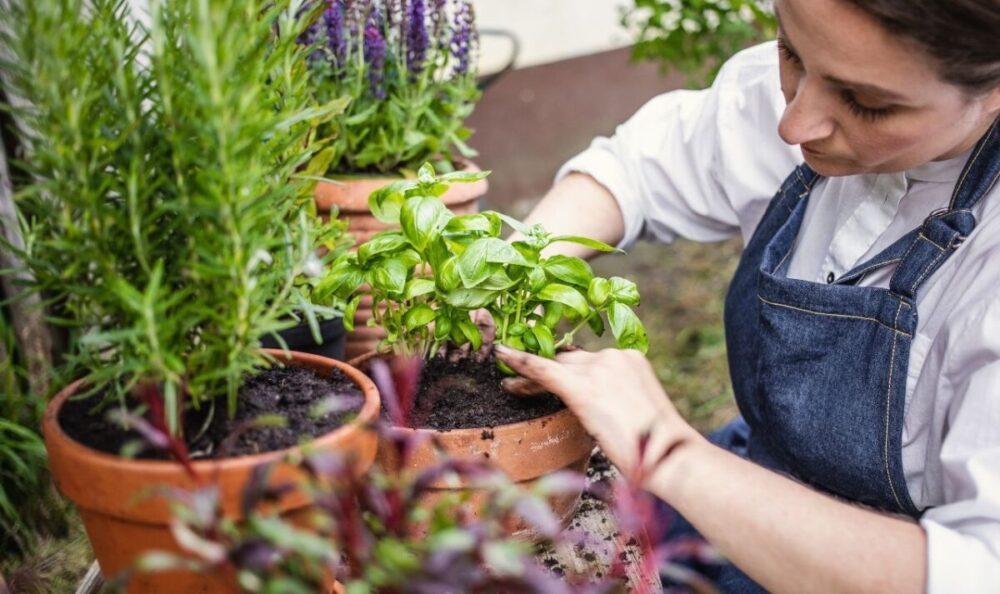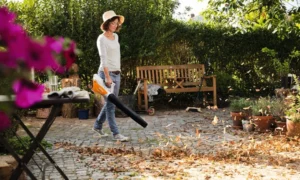Are you interested in starting your own herb garden but unsure where to begin? Herb gardening is the perfect starting point for first-timers.
Herbs are easy and rewarding to grow yourself. They don’t require a huge time commitment, yet keep on giving all season long. Read on to learn how to create a beautiful herb garden at home.
Understanding Herb Types and Lifecycles
First of all, you should have an idea of the types of possible herbs to include in your garden. There are mainly 3 main categories that herbs fall into based on their lifespan patterns, as follows:
Annual Herbs
These types of herbs are speedy plants that must complete their lifecycle within one growing season. They flower and set seeds before the start of winter.
Popular annual herbs include basil and cilantro. Their rapid growth in warm weather makes them a favorable addition to your lovely herb garden.
However, they are also the most ephemeral plants. Once exposed to cold temperatures, they will completely perish. This means that you need to start new annuals from seed every spring if you wish to continue harvesting them every year.
Perennial Herbs
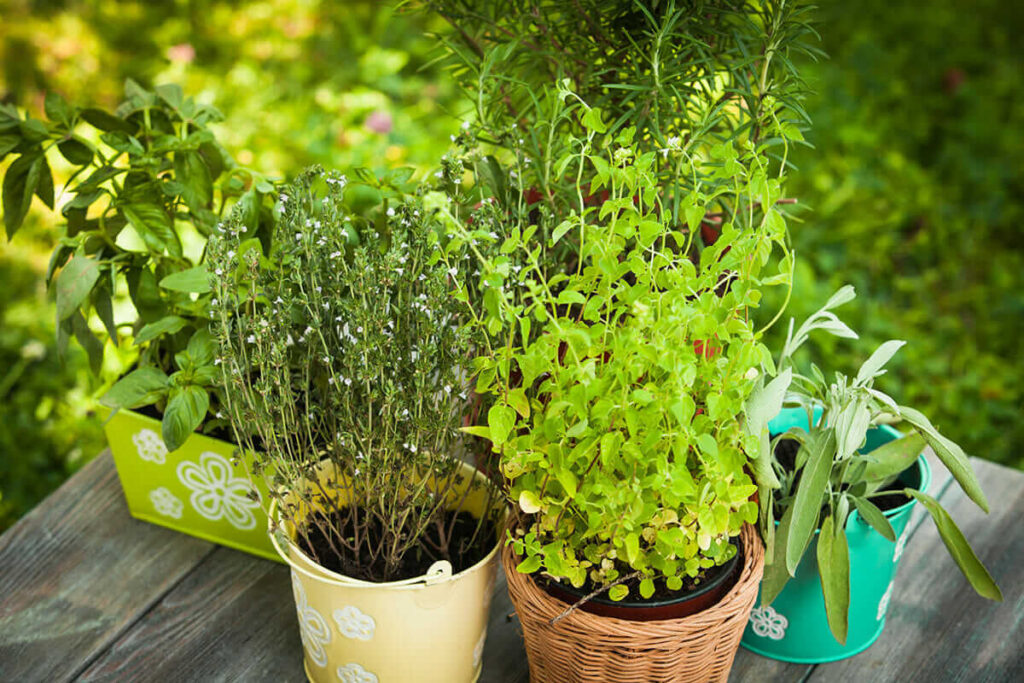
Source: modernfarmer.com
These herbs are quite resilient and can survive from year to year. They include favorites like oregano, mint, rosemary, and thyme.
Thanks to their deep roots, they can withstand cold winters and dry spells. Once established in your garden beds, they will reliably return season after season with minimal care from your end.
Some perennials are even known to be vigorous plants, such as mint. They will spread rapidly in the garden if not contained. That’s why it’s best to grow mint and others with that same feature in above-ground planters.
Biennial Herbs
In contrast to the other two types, biennial herbs complete their lifecycle over two whole years. During the first year of growth, they develop leaves, roots, and energy stores. However, they don’t produce any flowers.
As they go into their second year, they start to generate blossoms and fruits/seeds before dying. To continue having them, they need to be replanted after this point. Parsley and celery are well-known examples of biennial herbs.
Growing Easy Herbs
Some herbs are much simpler to grow than others, making them ideal for beginners. They will help you start and gain experience, which will motivate you to move to harder ones later on.
Here are some of the easiest herbs to start with:
Basil
An annual herb, basil grows when exposed directly to sunlight with consistently moist soil. You can sow the seeds starting in March until May.
You can keep pinching the tips once they reach a height of about fifteen centimeters to delay flowering and produce more leaves.
Parsley
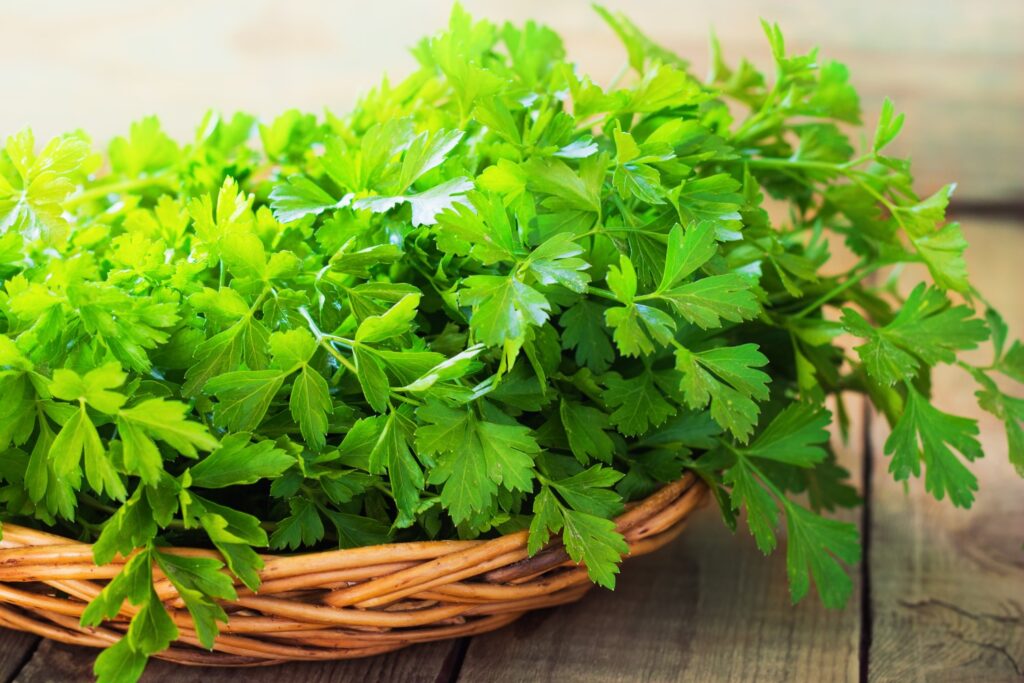
Source: plantura.garden
This is a fast-growing biennial that prefers full sunlight or a partially shaded area with damp soil. The seeds are slow to germinate, so it’s best to start them indoors beforehand.
Chives
These perennial alliums grow quickly from seed to division. Their pink flowers attract beneficial insects, while the hollow green leaves offer a mild onion flavor.
Plant them in the sun or partial shade, always keeping the soil moist. Cut back after flowering to encourage new growth.
Oregano
This hardy perennial thrives in full sunlight or partial shade in light soil. Seeds can be sown directly outdoors in spring once the soil warms, or you can start them indoors if you prefer to start them earlier.
Allow seedlings to reach about ten centimeters before pinching to encourage a bushier outcome.
Mint
It is preferable to purchase mint plants because growing their seeds can be quite difficult. It will require sun or partial shade to grow with damp soil.
Make sure you put it in a container to avoid invasive spreading in your garden. As usual, pinch off flower buds for continuous leaf growth.
Thyme
Another hardy perennial, thyme is well-suited for beginners. It flourishes in full sunlight and prefers having its soil dry out a bit between waterings.
Thyme is tolerant to drought once established, which means it will demand little care from you. While seeds can sometimes be tricky to germinate, you can always purchase the seeds or use cuttings.
After flowering concludes each year, mild pruning is required to stimulate additional leaf growth.
Preparing Your Garden Space
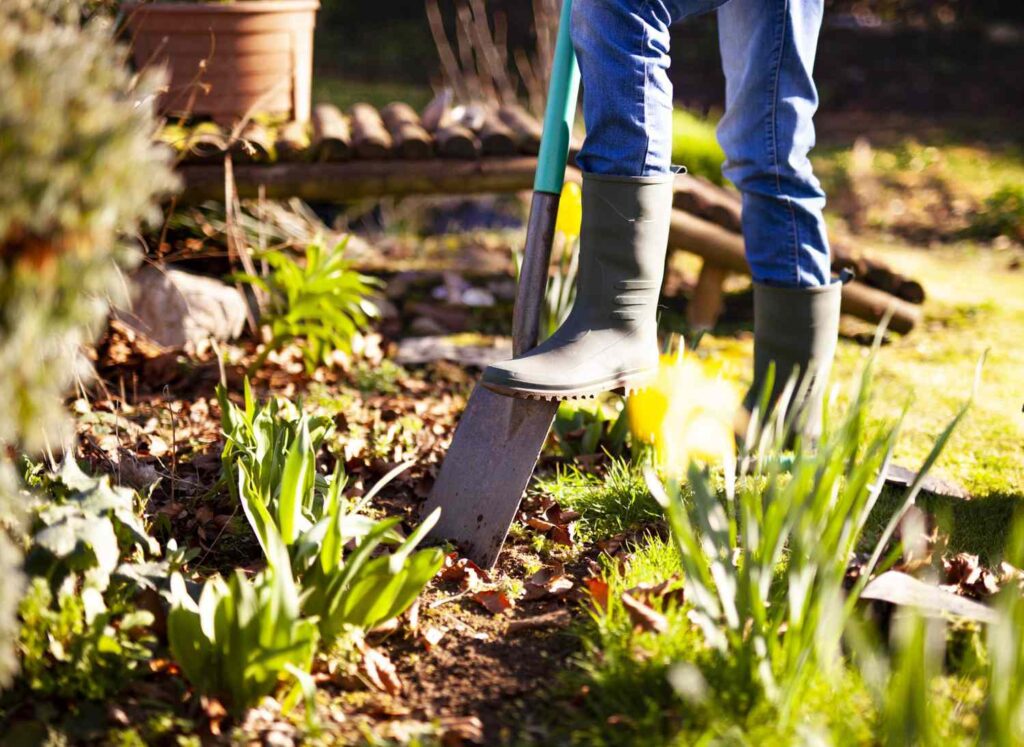
Source: southernliving.com
Now that you know which herbs you want to grow, it’s time to prepare their growing environment.
Firstly, you need to consider the location within your garden. Most herbs love full sunlight, so start by scanning your yard for a spot that receives the most direct rays each day. The ideal is at least 6 hours worth of sunlight per day.
Equally important is the quality of your soil. Herbs want loose, nutrient-rich earth with good drainage. Examine the texture of your current soil. If it’s thick clay or heavily compacted soil, then you need to moisten it.
Work in several inches of organic matter like compost or shredded leaves, which improves the structure while feeding hidden roots.
Next, you should decide which herbs you would like to plant on the ground and which ones will be in containers. Ground beds are more permanent, but using containers allows flexibility with their location.
You can use barrels, buckets, or even window boxes, especially if you don’t have a spacious garden or want to plant herbs on your balcony.
Finally, your last step before planting in your garden is weed removal. You should always pull existing weeds before installing new herbs.
Furthermore, add a mulch barrier to prevent future weeds from infiltrating the garden space during the growth cycle.
Planting Your Herbs in the Ground
Here’s the easiest step-by-step guide on how to grow herbs:
- Depending on your preference, choose the most suitable herbs to plant.
- Dig individual holes for each herb plant. The herbs should be slightly wider than the roots but not much deeper.
- Slide your hands carefully to remove the herb from its container and, if necessary, squeeze the sides to help loosen it.
- Place the herb in the center of the hole. The plant’s top roots should be slightly above the surrounding soil line.
- Fill the area around the root ball with the existing soil, pressing firmly to eliminate any air pockets as you go.
- Water each planted herb thoroughly, pouring around the base until the soil is fully saturated and any remaining holes have been filled.
- Finish with a 2-3 inch layer of mulch around each plant to help retain moisture and suppress weeds. Always check soil moisture and adjust water amounts as needed.
Harvesting Grown Herbs
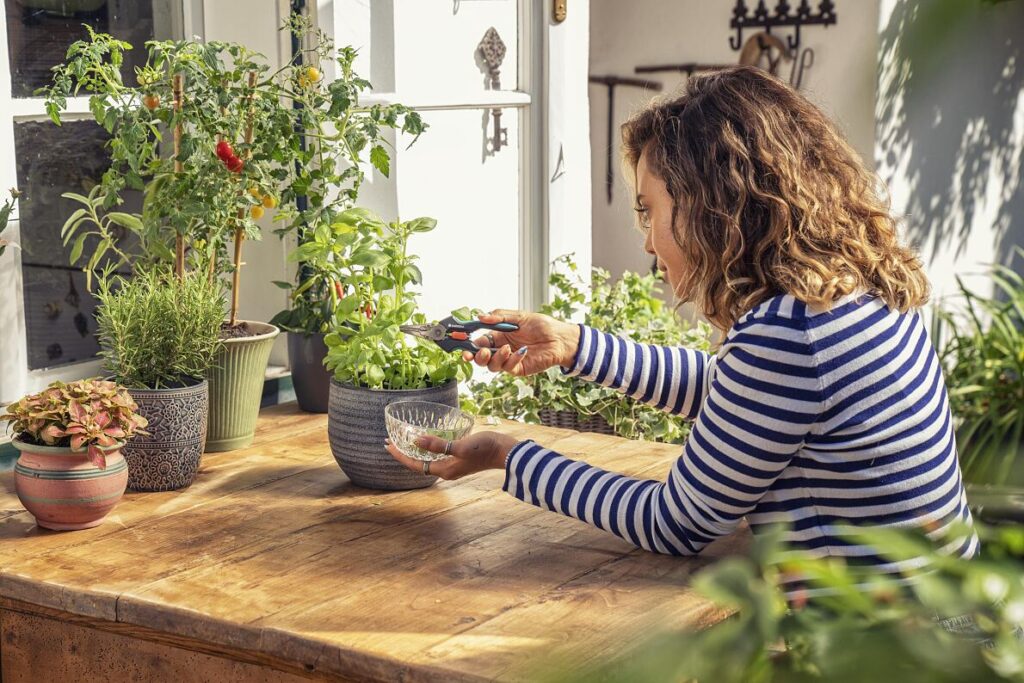
Source: media-gardena.com
It’s time to enjoy fresh greens in the comfort of your home. How you harvest will ensure your herbs remain healthy for a long time.
Soft, leafy herbs require the use of scissors or your hands to pinch stems just above the leaves. This will encourage a bushier regrowth.
Expert tip ─ Be sure to leave at least 3 to 4 inches of stem remaining and harvest these types of herbs every few weeks to promote their continued growth.
On the other hand, woody herbs such as rosemary, oregano, and thyme should be pruned with garden shears or pruners.
Trim branches back to just above where you see new growth emerging. This reserves the plant’s shape and encourages further growth.
Expert tip ─ Do this every 4 to 6 weeks according to the growth rate you notice.
Once clipped, rinse your herbs and gently dry them with a paper towel to remove any lingering water. Now, they are ready for immediate use or for preservation methods to prolong their shelf life.
Getting a Helping Hand
While herb gardening is low maintenance overall, sometimes you will require an extra set of hands for your garden. Consider contacting a professional gardener for assistance.
A gardener can help you with large tasks like initial garden preparation, especially if you’re short on time. They have extensive experience prepping soil, designing beds and layouts, and planting herbs efficiently.
They can also do the regular weeding and garden maintenance tasks for you, which is the easiest way to stay on top of things.
Annual deep tilling and fertilizing of mature beds is another job ideally tackled by a gardener and their high-quality tools.
Conclusion
There’s nothing quite like adding your own fresh herbs to a delicious homemade meal. They offer a flavour like no other, and once you start, you will become motivated to include more herbs in your own garden.
With this guide, it’s easier than ever to start herb gardening right away, just like you always wanted.

